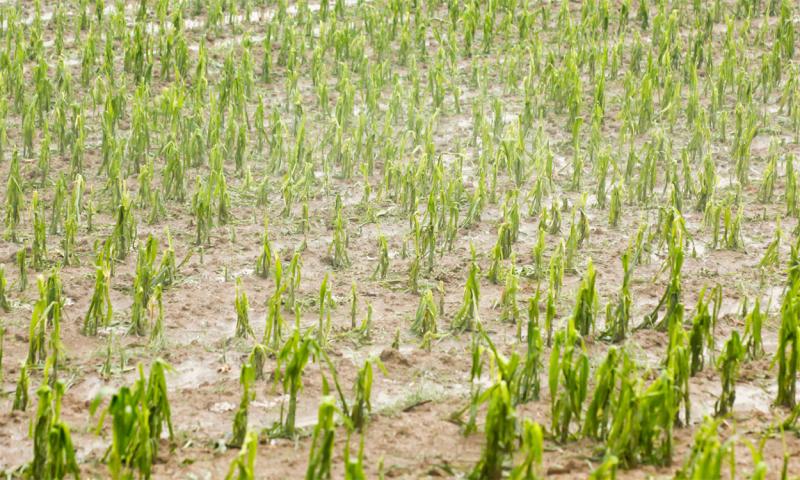
The recent storms in South Dakota brought along rain, severe wind, sand blasting and, in some cases, hail. With the hail and sand blasting that occurred, many growers are wondering if a fungicide application is needed to protect their crops from any damage caused by the sand blasting or hail.
Research conducted on corn using simulated hail damage in Illinois did not show significant yield increases from fungicide applications of Headline, Quadris or Quilt. In Wisconsin, research conducted under natural hail events showed that Headline on corn (at R2 stage of growth) and Headline, Quilt and Stratego on soybeans (at R3 stage of growth) also did not result in increased yield. No yield response was seen, in these studies, in hail-damaged crops treated with a fungicide. There is no research data available on fungicide use on hail-damaged wheat.
Diseases to Watch For
Bacterial diseases, which mainly infect plants through wounds or natural plant openings, may be elevated due to plants damaged by hail or sand blasting. Bacterial diseases observed after hail or sand blasting may include bacterial pustule and bacterial blight on soybean, bacterial leaf streak and Goss’s wilt on corn and bacterial leaf streak and bacterial leaf blight on wheat. Fungicides do not offer protection against these bacterial diseases.
When Fungicides Are Warranted
Fungal pathogens do not require a wound (such as from hail or sand blasting) for infection to occur. Applying fungicides on hail-damaged plants should only be warranted if there are significant fungal diseases developing on these plants. Fungicides protect the yield potential of plants if significant diseases are present, but do not improve the yield potential of crops. Both corn and soybeans should grow out of slight hail injury, unless the growing point was damaged. Recommended fungicide timings for soybean are between R1 (white mold) and R3 for other fungal diseases and corn between VT and R1. Scout fields to determine if there is significant disease pressure developing, and determine if the weather is favorable for disease development.


